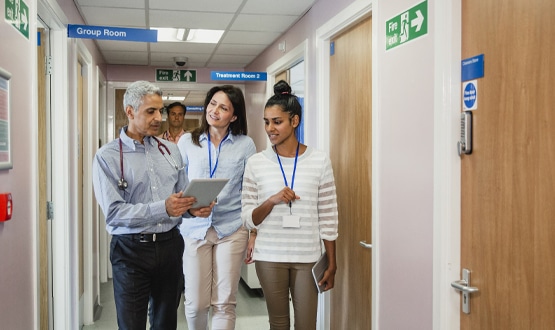GP2GP record transfers struggling on attachments
- 26 July 2005
GP2GP record transfer is under threat because the NHS spine may be unable to cope with the size and number of attachments to GP records, according to GP representatives.
It appears that the spine is unable to handle the large number of attachments – often vital documents like scanned hospital referral letters – which many practices routinely attach as part of a patient’s electronic record.
However a spokesman for BT, the suppliers of the spine, says the company is confident that the spine will be able to handle the attachments involved in GP2GP transfer when it is rolled out.
He told EHI Primary Care: "We have worked closely with the CfH GP-to-GP team as well as the CfH design authority to ensure BT will continue to meet its service levels."
The delivery of electronic transfer of GP records between practices is viewed as one of the most useful and important aspects of the Connecting for Health programme for GPs who have so far given a very mixed reception to projects such as Choose and Book and the NHS Care Records Service.
Dr Alan Hassey, joint-chair of the RCGP/GPC IT Committee which is actively involved in the GP2GP project, says the problem with attachments has emerged during the current testing phase for GP2GP record transfer.
He told EHI Primary Care: “There is a problem both with the number of attachments that can be sent and the overall size of the message.”
From a separate source EHI Primary Care understands that testing of the new system at Gateshead has found half of all practice records are too big for the current version of the NHS spine to handle.
EHI Primary Care further understands that Connecting for Health’s contract with BT, the suppliers of the spine, specifies that it should be able to carry individual records of up to 25megabytes but that as yet the spine can only cope with records of 5 megabytes or less.
A BT spokesman said: “We never discuss the precise terms of our contracts however we can confirm that BT will continue to meet its agreed service levels.”
Dr Hassey said the average record probably had about 10 attachments but some records have as many as 99 attachments.
He added: “We are expecting that the GP2GP testing process will be completed by the end of September and we are hoping to sign it off at our October committee meeting. There should then be no reason for GP2GP messaging not to proceed but it will be down to BT to deliver the service.”
EHI Primary Care understands that so far testing of GP2GP has only occurred between practices using the same systems, and is about to begin between practices using different practice systems.
Connecting for Health estimates in its latest bulletin on the GP2GP project that the spine will have to handle 500 record transfers for each of England’s 9000 practices every year, a total of 4.5million record transfers a year, without taking into account the far greater number of transfers involved in university and inner city practices.
The problems with GP2GP record transfer has led the British Medical Association’s General Practitioner Committee to this week issue advice to GPs asking them to minimise the size of attachments, particularly documents created electronically within practices with embedded graphics.
The advice from Dr Paul Cundy, the other joint-chair of the GPC/RCGP IT committee, says that attachments have the potential to ‘swamp the system.’ He adds: “In particular, Microsoft Word processed documents have the potential to be very large, especially if they incorporate images in the header or background. Some embedded images can make the file size 100 times bigger than the text-only version and the implications are self-evident.”
Dr Cundy’s guidance also highlights the scale of the problem, as he says that in his own practice alone there are over 89,000 attachments to patient records.
The GPC note advises practices to consider removing any embedded images in word processor generated letters that they attach to records and if possible to keep word processor generated letters to text-only. What it does not indicate is how existing attachments should be managed.
Jonathan Biles, managing director of document management firm Cross Medical Systems, said the issue of storage should not be the only focus of concern.
He told EHI Primary Care: “There’s a much bigger problem here than storage and that is that most practices do not have an electronic record to transfer. In many cases half of it is on paper and half of it is electronic which is almost worse than having no electronic record at all. There is also an inconsistent structure between systems.”
A bulletin on GP2GP published by Connecting for Health last month states that medication, allergies and some business functions including call and recall systems will not be able to be transferred in structured form.
Prescribed medication will be viewable at the new practice but will be inactive and clinicians with prescribing rights will need to authorise the patient’s current medication at the initial consultation, it says. Similarly identified allergies will be imported and viewable but clinicians will need to discuss and ‘activate’ allergies with their patients.
The bulletin adds that the transfer of the paper based Medical Record Envelope will continue as normal. It adds: “The requirement for this duplication of patient health information to continue will form part of the evaluation criteria of the early adopter trails.”
EHI Primary Care reported last month that the joint GPC/RCGP IT committee was concerned about incomplete record transfers. It planned to issue a reminder to GPs via local medical committees that all information should be sent when patients move practice.
The committee was concerned about reports that some practices are sending patient records without important attachments such as scanned letters, images and ECGs.
Links
GP2GP transfers: the benefits and limitations
Concerns over incomplete patient record transfers




